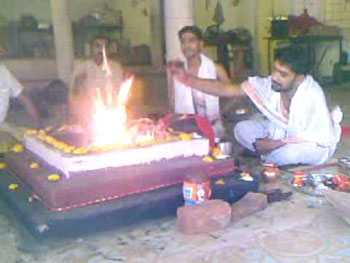 Graha Puja symbolises an invitation to the different planets and different Gods to grace the occasion of Aahuti. All the planets are symbolized in a nut form placed in a particular order. The planet Gods are owed immense reverence. The Gods are bathed, tika is applied and they are garlanded. The planets have a gravitational influence on the subconscious of man. The man by worshipping these planets is accustomed to their influences. The worship helps man to get a control over his mental activity.
Graha Puja symbolises an invitation to the different planets and different Gods to grace the occasion of Aahuti. All the planets are symbolized in a nut form placed in a particular order. The planet Gods are owed immense reverence. The Gods are bathed, tika is applied and they are garlanded. The planets have a gravitational influence on the subconscious of man. The man by worshipping these planets is accustomed to their influences. The worship helps man to get a control over his mental activity.
In India there are many temples where images of nine planets are installed and worshipped. A Hindu consults an astrologer to know about the negative influence of planets over him. A Puja is performed accordingly. Even the reverse is also true. Someone may be told that a particular planet is exerting a positive influence and so he needs to perform a Puja to increase the good influence. Graha Shanti is a Puja which is performed in order to make peace with the planets.
This article is a stub. You can enrich by adding more information to it. Send your Write Up to content@indianetzone.com




















